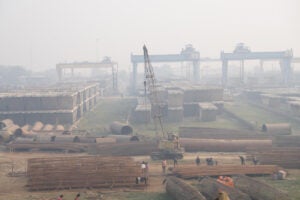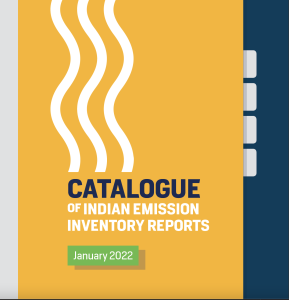Winter Smog has worsened in north India, finds study
Times of India / Manka Behl / Jun 14, 2023, 08:23 IST

Catalogue of Indian Emission Inventory Reports
Summary
A detailed air emission inventory (EI) is a comprehensive list of pollutants within a pre-defined geographical area is beneficial for developing clean air action plans. It can also test the effectiveness of pilot interventions towards air quality abatement. Emission inventories have been prepared for several Indian cities and states. However, several of these EI reports have not been given due attention. This report presents a database of all publicly available EI reports and several previously un-referred studies for India to help policymakers and scientists prepare reckoner of all the work done in the area.
EI studies have been tabulated as per the source contribution (total emissions, transport, residential, industrial, power plants, agriculture, waste and others) along with details such as geography, grid size, emission factors used, and type of data collected (primary surveys vs secondary literature). Each sector list also consists of the pollutants studied and highlights those reports that have closely followed the existing CPCB guidelines.
As per various operating sections of the Air Act 1981, air pollution monitoring, calculation of pollution load, preparation of emission inventory, preparation of action plan for air pollution control should be done as per the SOPs issued by CPCB from time to time. Therefore, emission inventory prepared by agencies and experts using other methodology may not be tenable per Air Act 1981. In its order for Critically Polluted Areas and Non-Attainment Cities, the National Green Tribunal mentioned that methodologies recommended by CPCB should be followed for such studies.
Robust EI reports form the mainstay of a city’s source apportionment and mitigation strategies. Therefore, scrutiny of the EI reports is required, especially now that all 132 non-attainment cities have been mandated to carry out source apportionment studies. Furthermore, periodically revised emission inventories could help check each sector’s efficacy of control actions. Finally, regional emission inventories now need to be prioritised as the airshed approach has gained prominence in air pollution management in India. About 200 EI reports have been collated and made available with hyperlinks for researchers and policymakers to use. They have also been sectorally classified for ease.
Key Findings
- An easy to use ready reckoner of air pollution emission inventory studies for India was created. These reports were catalogued as per sectors; Total emissions, Transport emissions, Industrial and Power Plant emissions, Residential emissions and Emissions from Agriculture, Waste and other miscellaneous sectors.
- It was found that only some of the studies followed the CPCB guidelines closely of using indigenous emission factors and primary data for creating emission inventories
- Geographically, most of the studies were concentrated in the Indo-Gangetic Plain, focusing on Delhi and the National Capital Region. Multiple emission inventories for the same city and region leads to uncertainties. Instead, a common framework for EI development should be followed. EIs should be periodically updated every few years to test the efficacy of interventions. For instance, in the transport sector, EI for the current year could help gain insights on the effects of introduction on BS VI mass emission standards on road transport emissions. In the residential sector, the introduction of LPG in rural households would have led to a reduction in emissions, and this should reflect in the latest EI report
- Emission factors will determine the accuracy of estimations. However, our Indian conditions are distinct from our western counterparts. Therefore, relying on the emission factors developed by USEPA might lead to inaccuracies. Thus, the transport sector emission factors developed by the Automotive Research Association of India (ARAI) were used.
- Inventories need to be developed for toxics like VOCs and heavy metals like mercury. Doing so will enable the development of standards for these pollutants
For further details on the report:
Parthaa Bosu (pbosu@edf.org)
Swagata Dey (sdey@edf.org)

